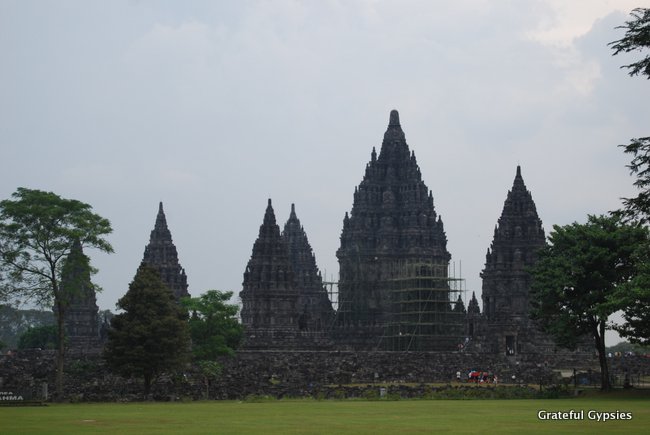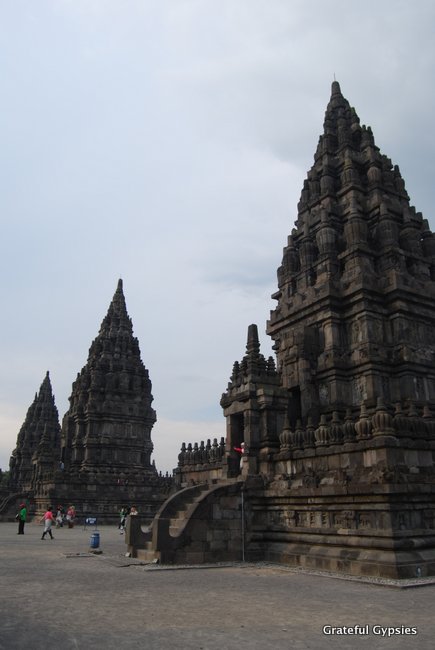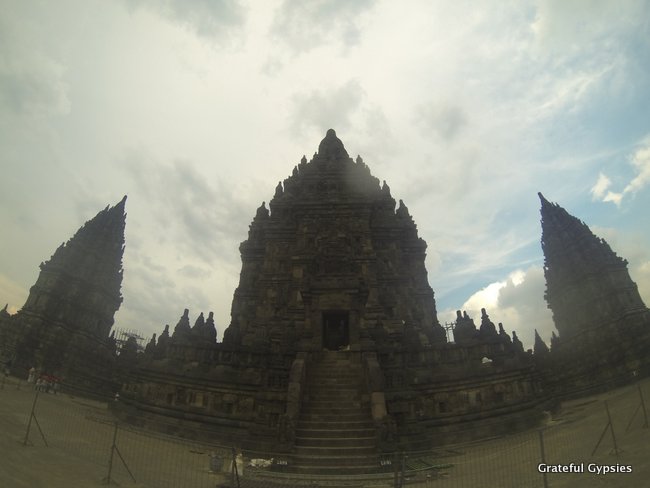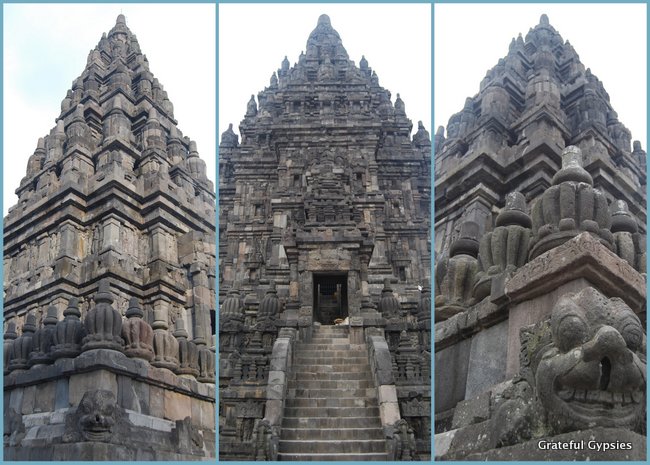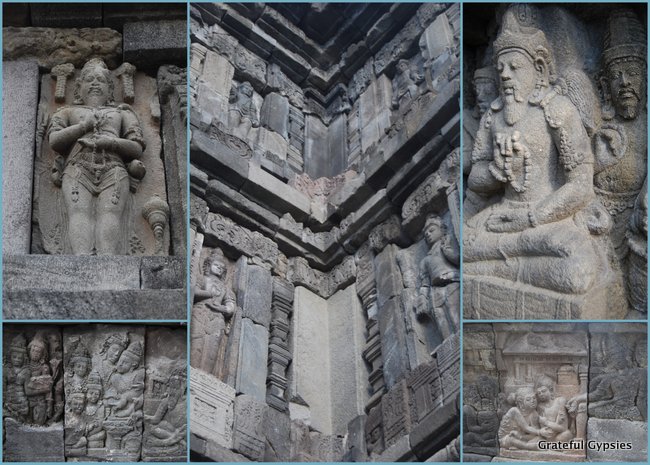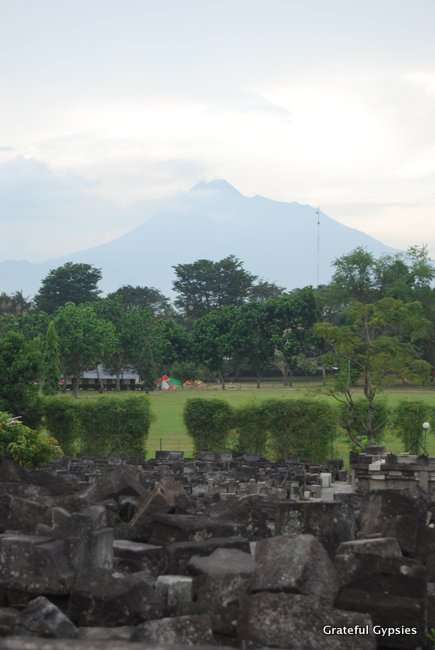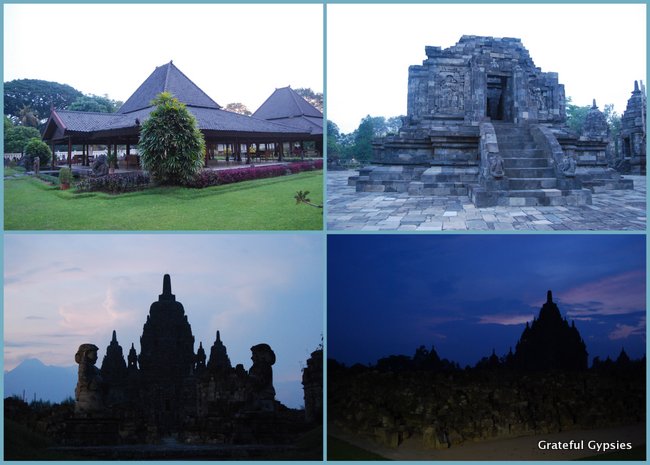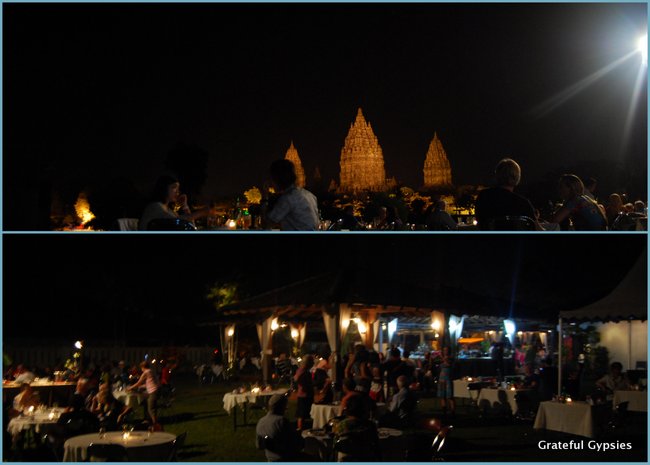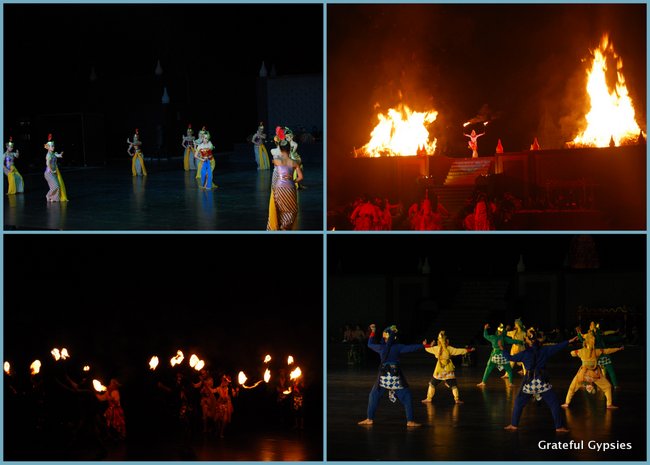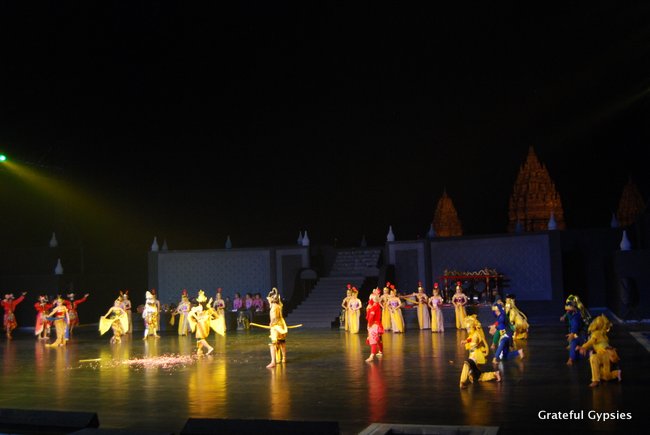Prambanan – Indonesia’s Largest Hindu Temple Posted by sasha on Feb 18, 2015 in Uncategorized
One of the highlights of traveling across Java is a visit to the 9th century Hindu temple compound of Prambanan. The largest Hindu temple in all of Indonesia and one of the biggest in SE Asia, this impressive structure was recognized as an outstanding religious complex when it was given UNESCO status in 1991. To help you plan your visit to Prambanan, here’s a bit of history and details on traveling there:
History
Construction of the Prambanan temple complex began with Rakai Pikatan, a king of the Medang/Mataram Kingdom. It was dedicated to the Hindu deity Shiva – the destroyer, and was expanded by successive kings. At its peak, there were 240 temples in total with the compound serving as the royal temple. The good times wouldn’t last, though, as the grand temple was eventually abandoned and left to deteriorate. It’s believed this was either due to an eruption of the nearby Mt. Merapi or potentially a political struggle. In the 16th century, a huge earthquake led to the collapse of the temple.
After many years of neglect, Prambanan was rediscovered by the Dutch. Surveys and excavations began on the temple grounds, but formal restoration efforts did not begin until 1930. As much of the original stonework had been stolen, only those structures with 75% of the original material available were rebuilt. Yet another earthquake in 2006 did further damage to the temple. Restoration efforts are ongoing, so don’t be surprised if some of the shrines are covered in scaffolding on your visit.
Local Legend
Although the temple was rediscovered by the Dutch, the locals were fully aware of the temple ruins. In fact, they developed quite the interesting legend to attach to the temple. As the story goes, a man named Bandung Bondowoso wanted to marry a beautiful princess named Loro Djonggrang. Although the king agreed to his request, the princess did not want to oblige. She came up with a clever idea to avoid marrying him, though – she told him she would only accept if he could build 1,000 temples before dawn. Thanks to a little bit of magic and some assistance from genies, Bandung had the 999th completed and was about to win the girl. With time running out, she decided to ask the women of the village to start pounding rice and light a fire in order to wake the roosters. Her plan worked, and Bandung fell just short of finishing the 1,000th temple. Furious, Bandung decided to turn the princess into stone. A statue of her graces the main temple, which explains the Javanese name for the temple – Rara Jonggrang, meaning “slender maiden.” In addition, a nearby temple is named Candi Sewu – “a thousand temples.”
Check out the legend of the temple in this short video.
The Prambanan Temple
The main temple is dedicated to the Trimurti – the Hindu Trinity. The largest shrine in the middle is dedicated to Shiva, as previously mentioned. On either side are structures built for Brahma (the Creator), and Vishnu (the Preserver). Along the sides of these three temples are intricate carvings telling the Hindu epic of Ramayana.
Opposite from these are three smaller temples dedicated to the vehicles of each deity – Nandi, the bull, for Siva; Hamsa, the sacred swan, for Brahma; and the eagle Garuda for Vishnu. Off in the distance, you can also see the mighty Mt. Merapi on a clear day.
Information for Tourists
Just 11 km away from Yogyakarta, Prambanan is an easy half-day trip from the city. You can take a local bus, join a tour, hire your own driver, or ride yourself out there on two wheels. The temple is open from 6am-6pm, and tickets are $18 for foreign adults and $9 for students with ID. Guides can also be hired at the ticket office. Other than the main temple, you can also check out a small museum and a few other temples, such as Lumbung or the above-mentioned Candi Sewu. It’s best to plan your visit out to Prambanan for the late afternoon. This way, you avoid the hottest time of the day and you can stick around for the evening entertainment.
Ramayana Ballet
Just across the river from Candi Prambanan is an open-air theater that hosts performances of the Ramayana ballet. If you haven’t had dinner yet, don’t worry – they’ve got a buffet set up just outside of the theater. In the rainy season, the show moves indoors to the Trimurti theater.
This incredible performance – with one of the world’s finest religious monuments as the backdrop – is an experience not to be missed. The show doesn’t go on every night, so make sure you plan ahead if you really want to catch it. For more information on performance dates and ticket options, check out this summary.
We’ll have video highlights of the temple and the performance in the coming weeks, so subscribe to the YouTube channel to make sure you don’t miss them.

Build vocabulary, practice pronunciation, and more with Transparent Language Online. Available anytime, anywhere, on any device.
About the Author: sasha
Sasha is an English teacher, writer, photographer, and videographer from the great state of Michigan. Upon graduating from Michigan State University, he moved to China and spent 5+ years living, working, studying, and traveling there. He also studied Indonesian Language & Culture in Bali for a year. He and his wife run the travel blog Grateful Gypsies, and they're currently trying the digital nomad lifestyle across Latin America.



